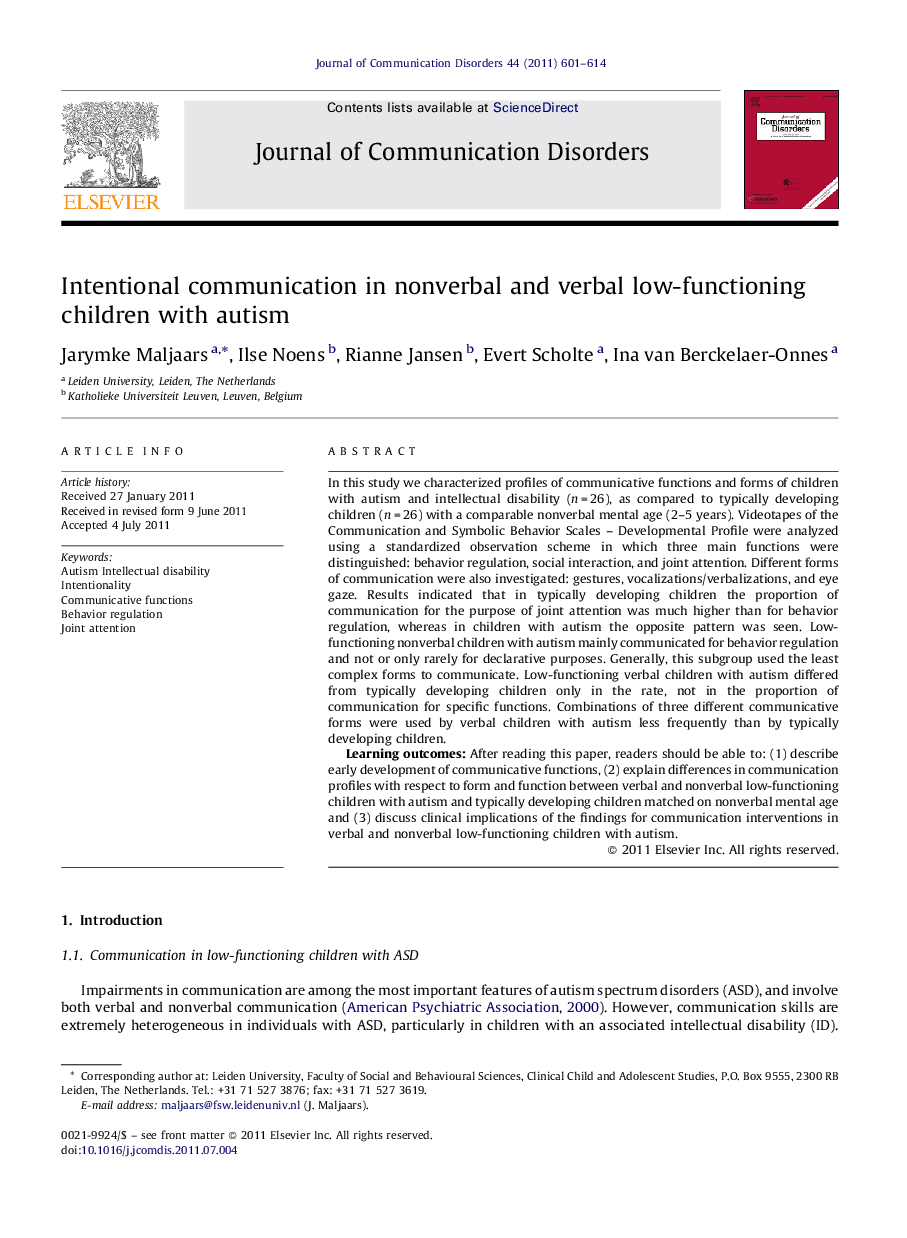| کد مقاله | کد نشریه | سال انتشار | مقاله انگلیسی | نسخه تمام متن |
|---|---|---|---|---|
| 910914 | 917664 | 2011 | 14 صفحه PDF | دانلود رایگان |

In this study we characterized profiles of communicative functions and forms of children with autism and intellectual disability (n = 26), as compared to typically developing children (n = 26) with a comparable nonverbal mental age (2–5 years). Videotapes of the Communication and Symbolic Behavior Scales – Developmental Profile were analyzed using a standardized observation scheme in which three main functions were distinguished: behavior regulation, social interaction, and joint attention. Different forms of communication were also investigated: gestures, vocalizations/verbalizations, and eye gaze. Results indicated that in typically developing children the proportion of communication for the purpose of joint attention was much higher than for behavior regulation, whereas in children with autism the opposite pattern was seen. Low-functioning nonverbal children with autism mainly communicated for behavior regulation and not or only rarely for declarative purposes. Generally, this subgroup used the least complex forms to communicate. Low-functioning verbal children with autism differed from typically developing children only in the rate, not in the proportion of communication for specific functions. Combinations of three different communicative forms were used by verbal children with autism less frequently than by typically developing children.Learning outcomes: After reading this paper, readers should be able to: (1) describe early development of communicative functions, (2) explain differences in communication profiles with respect to form and function between verbal and nonverbal low-functioning children with autism and typically developing children matched on nonverbal mental age and (3) discuss clinical implications of the findings for communication interventions in verbal and nonverbal low-functioning children with autism.
► Differences in communication profiles between verbal and nonverbal children with AD were found.
► Nonverbal children with AD mainly communicated for behavior regulation.
► Verbal children with AD communicated more often for joint attention than nonverbal children.
► Verbal children with AD did not differ in proportional use of communicative functions from TD children.
Journal: Journal of Communication Disorders - Volume 44, Issue 6, November–December 2011, Pages 601–614